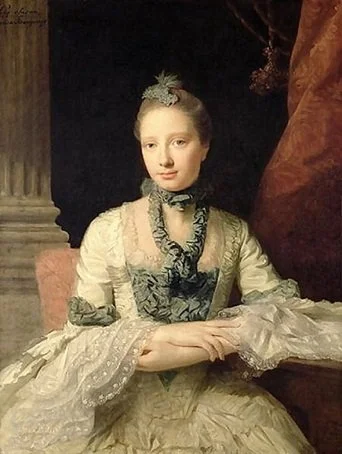Elite Women’s Agency in Marriage Choice and Negotiations 1700-1790
Emily Cotton is a PhD student at the University of Leicester, where both her BA and MA degrees were also undertaken. Her research project focuses on elite women’s agency in marriage choice and negotiations, 1700-1790. At Leicester, Emily is part of the Centre for English Local History and is interested in eighteenth-century social and political history, but most particularly in women’s emotional worlds within these spheres.
I began my PhD last October after completing an MA that centred on elite emotional expression within the eighteenth-century family. During my MA I wrote on perceptions of female infidelity during this period, and this led me to wonder how much choice young women really had regarding who they married, and the extent to which they participated in negotiations that led to the final settlement. It is these questions that my PhD sets out to answer. My aim is not to look at whether agency existed or not, but rather to focus on these two main points of enquiry that exhibited agency.
The existing historiography overwhelmingly argues that elite women were constrained by the patriarchal society in which they belonged, that familial obligation was overwhelmingly strong, and that the choice of marriage partner was the parent’s rather than the daughters. But upon examining other forms of elite women’s lives, such as their political activity, I came to realise that rather than being passive actors in their families’ economic and political strategy, many women were able to resist familial expectations and navigate the hurdles and restraints eighteenth-century society placed on them. This led me to question if the same was true for their courtships and marriages.
William Hogarth, ‘Marriage À La Mode: The Toilette’, 1743
A trip to the British Library this February confirmed my expectations. Focusing on archive material relating to two aristocratic young women: Caroline Fox, Baroness Holland (née Lady Caroline Lennox) and Susan O’Brien (née Lady Susan Fox Strangways), I traced their respective courtships with men far below their social standing to their elopements and banishment from their families across extensive correspondence.
Caroline’s parents, the Duke and Duchess of Richmond, flatly refused up-and-coming politician Henry Fox’s pursuit of their daughter, and upon hearing that she had slipped from the family home in the early hours and married him in May 1744, sent a scathing letter that would cut all contact between parent and child for four years. Even after bringing her back into the fold in 1748, the Richmonds made clear to Caroline that her ultimate transgression was to be forgiven but not forgotten. The Duke’s long letter to his eldest daughter frequently reminded Caroline of how much pain she had inflicted on her family, and her reintegration was administered with significant caution.
Allan Ramsay, ‘Portrait of Lady Susan Fox-Strangways’, 1761
A generation later, Caroline’s niece Susan Fox-Strangways was to meet an even harsher fate. Susan flouted the expectations placed upon her as the eldest daughter of Lord and Lady Ilchester by marrying impoverished actor William O’Brien in 1764. This led to an almost immediate exile to New York where the couple would spend the next six years. Lady Ilchester lobbied countless contacts in an attempt to keep Susan abroad and to find financial provision for her daughter, constantly reminding her that this was undeserved after the havoc Susan had wreaked upon the family. When the O’Briens hinted at return to England Lady Ilchester was furious, threatening to cut her daughter out of her will in one of many angry epistles.
Joshua Reynolds, ‘Lady Caroline Fox’, 1757-58
These collections of correspondence allow us to understand both the short and long-term consequences of elite young women transgressing social norms to marry a man entirely of their choice. Caroline and Susan’s actions and their ramifications would serve as an example to other young aristocratic girls who harboured hopes of rebelling in similar ways. These experiences show just how significant female resistance to authority was in eighteenth-century Georgian Britain and illuminates why many women conformed to the status quo in marriage choice.
But these case studies also show that agency was exercised, that young women did completely go against their families and marry a man of their choosing whether he was acceptable or not and, in these cases, made happy marriages from this resistance. Caroline and Susan not only navigated the controls placed upon them, but completely disregarded them, and so on the spectrum of elite young women’s agency in marriage choice sit on the more extreme end. I hope over the course of my PhD to find more instances of such resistance.


